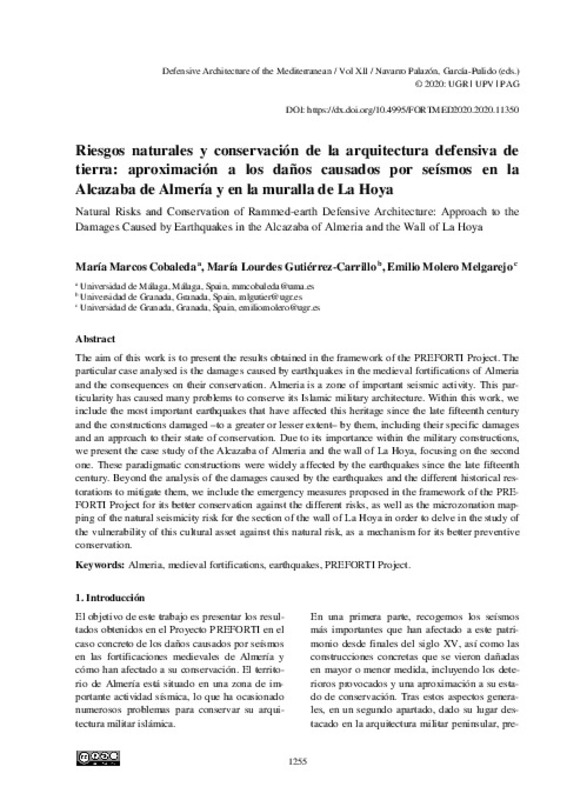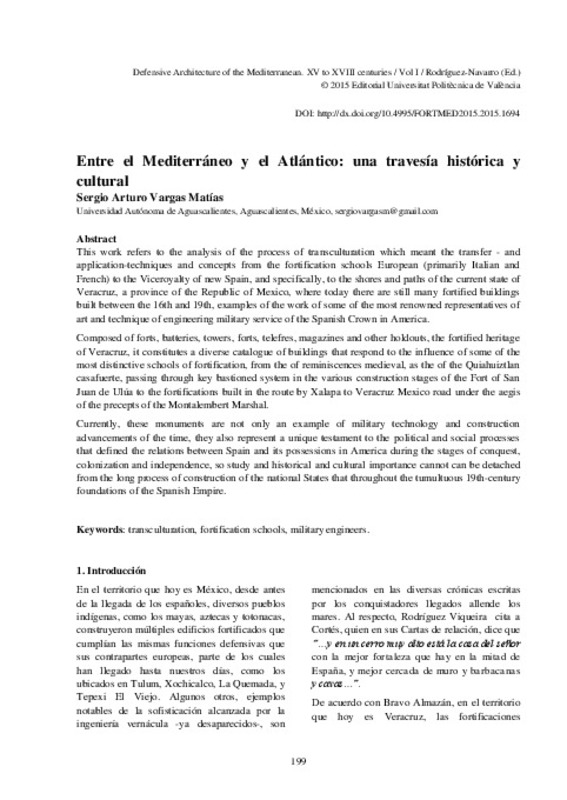JavaScript is disabled for your browser. Some features of this site may not work without it.
Buscar en RiuNet
Listar
Mi cuenta
Estadísticas
Ayuda RiuNet
Admin. UPV
The Fortifications of Chalcis (Evripos/Negreponte/Egriboz), Greece
Mostrar el registro sencillo del ítem
Ficheros en el ítem
| dc.contributor.author | Mamaloukos, Stavros
|
es_ES |
| dc.coverage.spatial | east=23.6228734; north=38.4686919; name=Dimarchou Skoura 2, Chalkida 341 00, Grècia | es_ES |
| dc.date.accessioned | 2020-07-10T11:10:57Z | |
| dc.date.available | 2020-07-10T11:10:57Z | |
| dc.date.issued | 2020-05-15 | |
| dc.identifier.isbn | 9788490488560 | |
| dc.identifier.uri | http://hdl.handle.net/10251/147765 | |
| dc.description.abstract | [EN] The aim of this paper is the study of the now destroyed fortifications of the Greek city of Chalcis (Evripos / Negreponte / Egriboz). Having been an important urban centre during the Early and Middle Byzantine Period, Chalcis was occupied by the Latins after the capture of Constantinople in 1204 and became a significant trade centre of Venice. By the end of the fourteenth century, the city became a Venetian holding. In 1470 the Ottomans captured the city after a brief siege. In 1688 the city was unsuccessfully besieged by the Venetians. And in 1833 it was annexed by the Greek State. In the end of the nineteenth century the fortifications of Chalcis were almost completely demolished during an attempt to reorganize and modernize the city. The fortified medieval city of Chalcis, the Kastro, had the shape of a long, irregular pentagon with maximum dimensions 400 x 700 m. It was surrounded on three sides, namely the north, west and south, by sea. Along its two other sides, the northeast and the southeast, there was a dry moat. Its fortifications had three gates, one on Euripus bridge and two on the land wall, through which the city was connected with Boeotia and Euboea, respectively. From the study of the fortifications, based on their depictions in old engravings and photographs as well as on some poor and still visible remnants, it appears that until their demolition the city walls retained to a large extent their late medieval form, although they had undergone significant interventions by the Ottomans, mainly on the eve, and just after the siege of 1688. The only surviving part of the city’s defences, the fort of Karababa, built on the steep hill of the Boeotian coast, can be dated to this period. | es_ES |
| dc.language | Inglés | es_ES |
| dc.publisher | Editorial Universitat Politècnica de València | es_ES |
| dc.rights | Reconocimiento - No comercial - Sin obra derivada (by-nc-nd) | es_ES |
| dc.subject | Fortifications | es_ES |
| dc.subject | Mediterranean | es_ES |
| dc.subject | Modern age | es_ES |
| dc.subject | Built Heritage | es_ES |
| dc.subject | Chalcis (Evripos / Negreponte / Egriboz) | es_ES |
| dc.subject | Medieval fortifications | es_ES |
| dc.subject | Fortifications of the early artillery era | es_ES |
| dc.subject | Venetian fortifications | es_ES |
| dc.subject | Ottoman fortifications | es_ES |
| dc.title | The Fortifications of Chalcis (Evripos/Negreponte/Egriboz), Greece | es_ES |
| dc.type | Capítulo de libro | es_ES |
| dc.type | Comunicación en congreso | es_ES |
| dc.identifier.doi | 10.4995/FORTMED2020.2020.11331 | |
| dc.rights.accessRights | Abierto | es_ES |
| dc.description.bibliographicCitation | Mamaloukos, S. (2020). The Fortifications of Chalcis (Evripos/Negreponte/Egriboz), Greece. Editorial Universitat Politècnica de València. 631-638. https://doi.org/10.4995/FORTMED2020.2020.11331 | es_ES |
| dc.description.accrualMethod | OCS | es_ES |
| dc.relation.conferencename | FORTMED2020 - Defensive Architecture of the Mediterranean | es_ES |
| dc.relation.conferencedate | Octubre 01-03,2020 | es_ES |
| dc.relation.conferenceplace | Granada, Spain | es_ES |
| dc.relation.publisherversion | http://ocs.editorial.upv.es/index.php/FORTMED/FORTMED2020/paper/view/11331 | es_ES |
| dc.description.upvformatpinicio | 631 | es_ES |
| dc.description.upvformatpfin | 638 | es_ES |
| dc.type.version | info:eu-repo/semantics/publishedVersion | es_ES |
| dc.relation.pasarela | OCS\11331 | es_ES |











